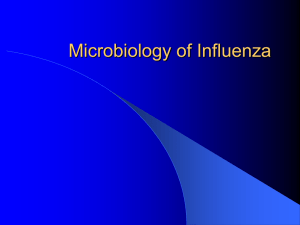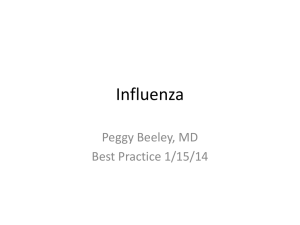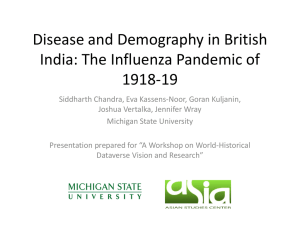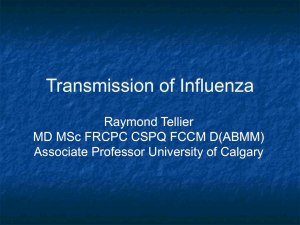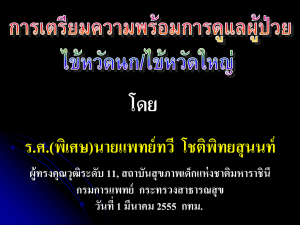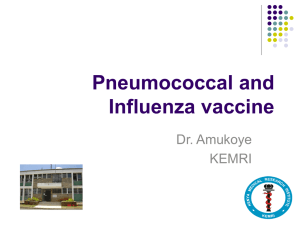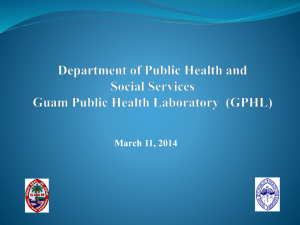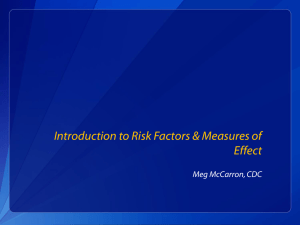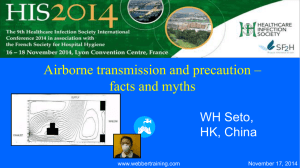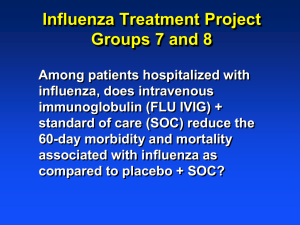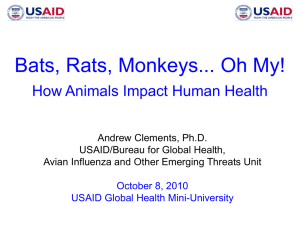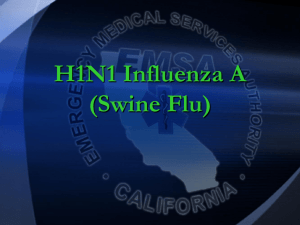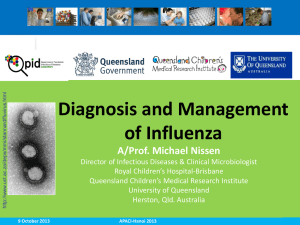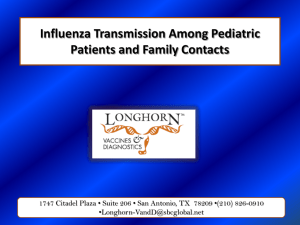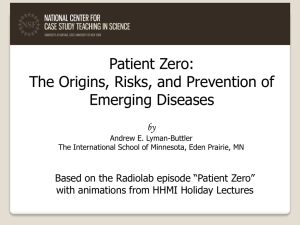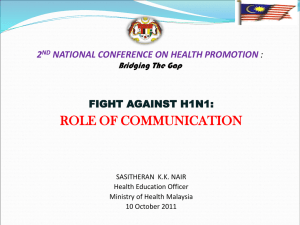Rapid Influenza Diagnostic Testing (RIDT) April 2014
advertisement
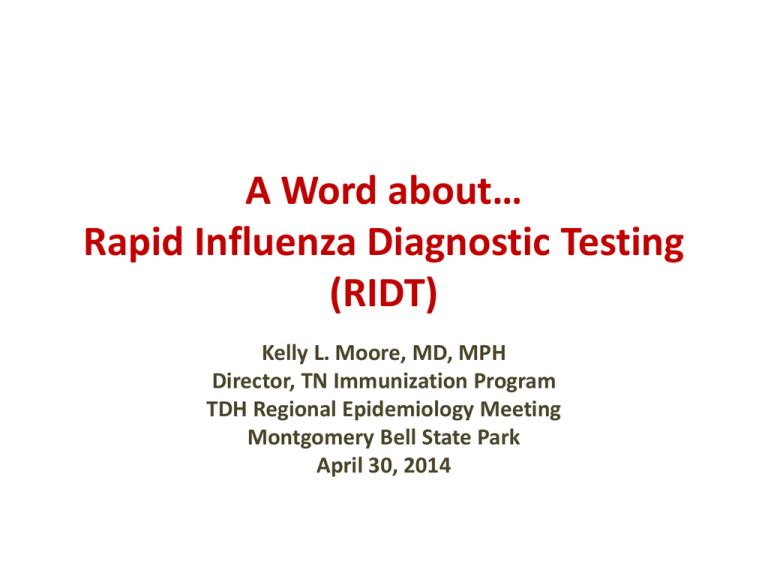
A Word about… Rapid Influenza Diagnostic Testing (RIDT) Kelly L. Moore, MD, MPH Director, TN Immunization Program TDH Regional Epidemiology Meeting Montgomery Bell State Park April 30, 2014 RIDTs: Convenient but…how useful? • Sensitivity (how likely is it to be positive if the patient has influenza) – 40-70%, but range of 10-80% has been reported vs. culture or RT-PCR • Specificity (how likely it is to be positive for influenza and not other things) – 90-95% (range 85-100%). • False negatives (missing it when it is there) more likely than false positives • Recall “positive predictive value” PPV, “negative predictive value” NPV – Dependent on pre-test likelihood that the patient has the condition • False-positive (and true-negative) more likely when virus not circulating widely – Beginning and end of the season and during summer • False-negative (and true-positive) more likely when virus is circulating widely • The Sentinel Provider Network is crucial – changes meaning of results Minimize False Results • Collect specimens as early in the illness as possible (ideally less than 4 days from illness onset). • Follow manufacturer's instructions, including acceptable specimens, and handling. • Follow-up negative results with confirmatory tests (RTPCR or viral culture) if a laboratory-confirmed influenza diagnosis is desired. • False negatives more likely if – Adult – Symptomatic 5 or more days – Upper respiratory specimen (e.g., nasal swab) • When patient has lower respiratory tract disease So you have RIDT results… When do you need real confirmation? • Consider influenza testing by culture or RTPCR to confirm results of an RIDT when: – RIDT negative + community influenza activity high + lab confirmation desired – RIDT positive + community influenza activity low + a false positive result is a consideration – Recent close exposure to pigs or poultry or other animals, novel influenza A infection possible Testing Hospitalized Patients • Influenza testing is recommended for hospitalized patients with suspected influenza. • Empiric antiviral treatment should be initiated as soon as possible without the need to wait for influenza testing results • Antiviral treatment should not be stopped based on negative RIDT results • Implement infection control measures upon admission for any hospitalized patient with suspected influenza even if RIDT results negative • Respiratory specimens can be tested for influenza by immunofluorescence, RT-PCR or viral culture. Serology is not for clinical management. Conclusion • Negative results of RIDTs do not exclude influenza virus infection • Treatment should not be withheld from a patient hospitalized with signs and symptoms of influenza on the basis of RIDT results • My view – Human psychology is can endanger patient lives in this situation – Instinct is for RIDT results to influence clinical judgment even when guidelines instruct one to ignore the RIDT • Evidence suggests antivirals benefit hospitalized patients even if initiated after the first 2 days of illness • Persons hospitalized with suspected influenza and not initiated on antiviral therapy are not given the best chance for recovery • Treat the patient, not the test
